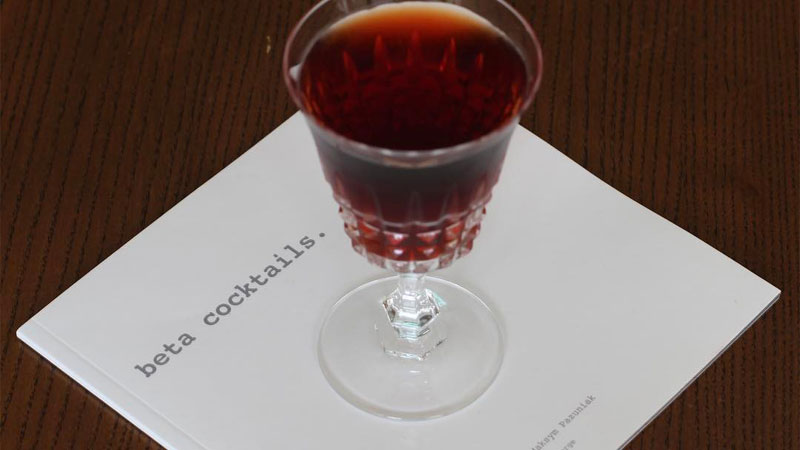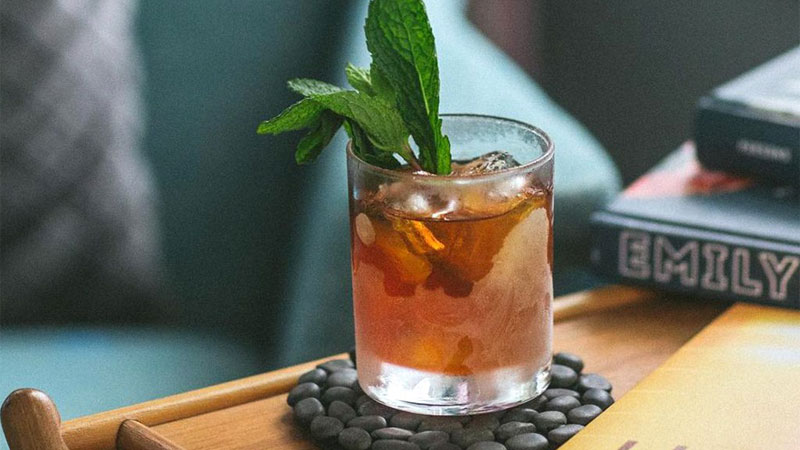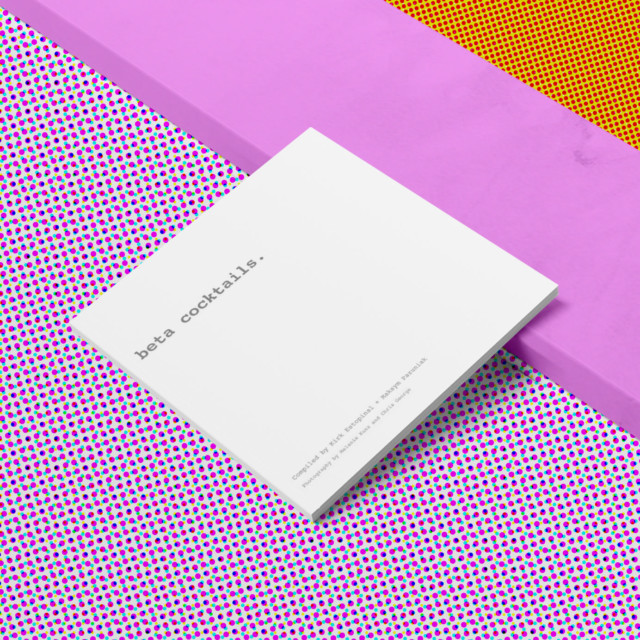This month, VinePair is exploring how drinks pros are taking on old trends with modern innovations. In Old Skills, New Tricks, we examine contemporary approaches to classic cocktails and clever techniques behind the bar — plus convention-breaking practices in wine, beer, whiskey, and more.
Hundreds of cocktail books have been published over the past 20 years. It is probably the greatest literary output on the subject in the history of mixed drinks. A few of them merit the mantle of “influential.” Among them: Dale DeGroff’s “The Craft of the Cocktail” and Gary Regan’s “The Joy of Mixology” as primers on the cocktail’s heritage; Death & Co. and PDT’s eponymous volumes as exhaustive introductions to the 21st-century style of craft cocktailing; and Sasha Petraske’s “Regarding Cocktails” for a touch of bar philosophy and drink-building austerity.
But, when their sheer limits in size, pages, and distribution are compared to their ultimate impact, “Beta Cocktails,” published 10 years ago, and its predecessor “Rogue Cocktails,” have to be ranked as equal contenders. The twin volumes — one black and one white, and both looking like manuals that come with an appliance — were the polemical work of two fed-up New Orleans bartenders. The books were thrown into this world without a publisher or publicist, but managed to punch a good-sized hole in the fast-hardening orthodoxy of the craft cocktail movement. With just 50-odd drinks collected from 20-odd bartenders, the books served up ideas that were themselves quite odd, and revolutionary.

“Me and Maks were looking for something to entertain ourselves within the cocktail world,” recalls Kirk Estopinal, one of the iconoclasts who put together “Rogue” and “Beta.” The other was Maksym Pazuniak. Both worked at Cure, the first significant craft cocktail bar in New Orleans, which opened in 2009. And, for a couple of upstarts working at an upstart joint, they were pretty disgusted with the cocktail status quo of the time.
“We were looking to get inspired,” says Estopinal. “Basically, everyone was digging up old cocktail books a lot. Me and Maks would say that every one of them was the same thing. Everyone stole Dale’s book and reprinted it, which in itself was a compilation of old recipes that had been in books before.”
Paired together on a sleepy Tuesday night shift at Cure, the two men passed the time bandying ideas back and forth. After Hurricane Katrina in 2005, Estopinal had retreated north and learned the art of mixology at The Violet Hour in Chicago — itself the first important cocktail bar in its city. Employees at Violet Hour were required to study certain cocktail texts. The one Estopinal gravitated toward most was “The Gentleman’s Companion: Being an Exotic Drinking Book or, Around the World with Jigger, Beaker and Flask,” the 1946 work by globetrotting bon vivant Charles H. Baker Jr. From that tome Kirk culled the otherworldly Angostura Sour, which calls for an ounce and a half of Angostura bitters, a pungent potion typically used in dashes. At Cure, he mixed up the cocktail to blow Pazuniak’s mind.
“That kicked off all these ideas in my head,” remembers Pazuniak. “If we can make a cocktail with two ounces of Ango, we can do anything. You could make the modifier the star of the show.”
And Estopinal and Pazuniak did do anything. They took the template for Violet Hour’s Pimm’s Cup and 86d the red liqueur that gives the drink its name. In its place they put in two ounces of something equally red: Peychaud’s Bitters, a New Orleans product usually reserved to accent Sazeracs. That drink, christened the Gunshop Fizz, became their rallying cry. They decided to publish a manifesto and sent the recipe for the Gunshop Fizz to like-minded bartending friends. They asked for any drinks of a similar, dogma-busting spirit.
The recipes flowed in. Some were Chicago cocktails Estopinal already knew of, but felt like a good fit with the Rogue/Beta ethos: Kyle Davidson’s The Art of Choke, which has a split base of rum and Cynar, an Italian artichoke liqueur, and, despite employing lime juice, is stirred, not shaken; and Toby Maloney’s Eeyore’s Requiem, where Campari tops an ingredient list that includes Cynar, Fernet, and 15 (!) drops of orange bitters.
“Violet Hour was a big influence on what we were doing,” says Pazuniak. “I don’t think the book would exist without Violet Hour.”
Estopinal and Pazuniak contributed the greatest number of drinks. Estopinal’s Spice Trade paired two ingredients, Herbsaint and Kümmel, that typically never got a second glance from most bartenders. Pazuniak devised a Campari “Martini,” which was basically a glass of cold Campari with an orange twist and a pinch of salt.

Time and again they turned to heritage European liqueurs that they considered delicious, but were neglected or misunderstood. Consider these statistics: The most frequently called-for ingredients in “Beta” were, in order: Cynar (used in 13 cocktails); Campari (9); the powerfully flavored vermouth Punt e Mes (8); Chartreuse, the potent, green, herbal liqueur made with dozens of components (7); and the burly Italian vermouth Carpano Antica (7). Mezcal, despite being basically unknown and unavailable in the U.S. at the time, was featured in six recipes.
The duo self-published the booklet. They didn’t even consider courting a publisher, thinking it would be an annoyance that would only slow them down. “We had to get this idea over with and get it out there,” says Estopinal, who has a music background and thought of the book as a punk-rock move. About 420 copies were printed. Kirk and Maks self-distributed, partly handing them out to friends and colleagues during the Tales of the Cocktail convention of 2009.
A cease-and-desist letter from Rogue Spirits put an end to further printings, so the booklet was reborn, in slightly revised form, as “Beta Cocktails” in 2011. Roughly the same number of copies of “Beta” were issued. According to Estopinal, Rogue Spirits’ litigation only burnished the book’s underground reputation. “Authenticity was an important idea at the time,” he says. “It made it look cool.” The book became sought after. Estopinal heard stories of people stealing copies from its few owners.
“Rogue was written primarily for bartenders,” explains Pazuniak. “That was one of the things that makes it exceptional. This was targeting people who were ready for something different.”
Turns out, the bartenders were more than ready. So were their customers. After Rogue/Beta, Italian bitters and amaros never again took a back seat at the cocktail bar. Fernet and mezcal came out of the shadows. Liqueurs typically used as modifying agents became rock stars and weird cocktails took their proper place on menus nationwide. Eeyore’s Requiem, Bitter Giuseppe, and The Art of Choke are now modern classic cocktails served everywhere.
“It helped popularize those drinks with bartenders,” says Toby Maloney, who, as the founder of The Violet Hour, can be rightly called the Godfather of Rogue/Beta. “Bartenders are always early adopters of things. It wasn’t just a list of recipes. It was this whole overreaching theory of cocktails which was way out there for the time. It’s absolutely influential.”
Rogue/Beta led to one additional concrete dividend. A customer gave a copy of “Rogue” to Al Sotack, a Philadelphia bartender who worked at The Franklin Mortgage & Investment Company cocktail bar. Sotack was so impressed, he reached out to Pazuniak to express his enthusiasm. The two men now own a Brooklyn bar together, Jupiter Disco.
Does Jupiter Disco follow the Rogue/Beta drumbeat? Pazuniak says one of the bar’s early menus had a riff on the book’s Fernet Sling, made with the Italian amaro Elisir Novasalus. Another early staple was a simple Campari & Tonic. Sounds pretty rogue to me.
